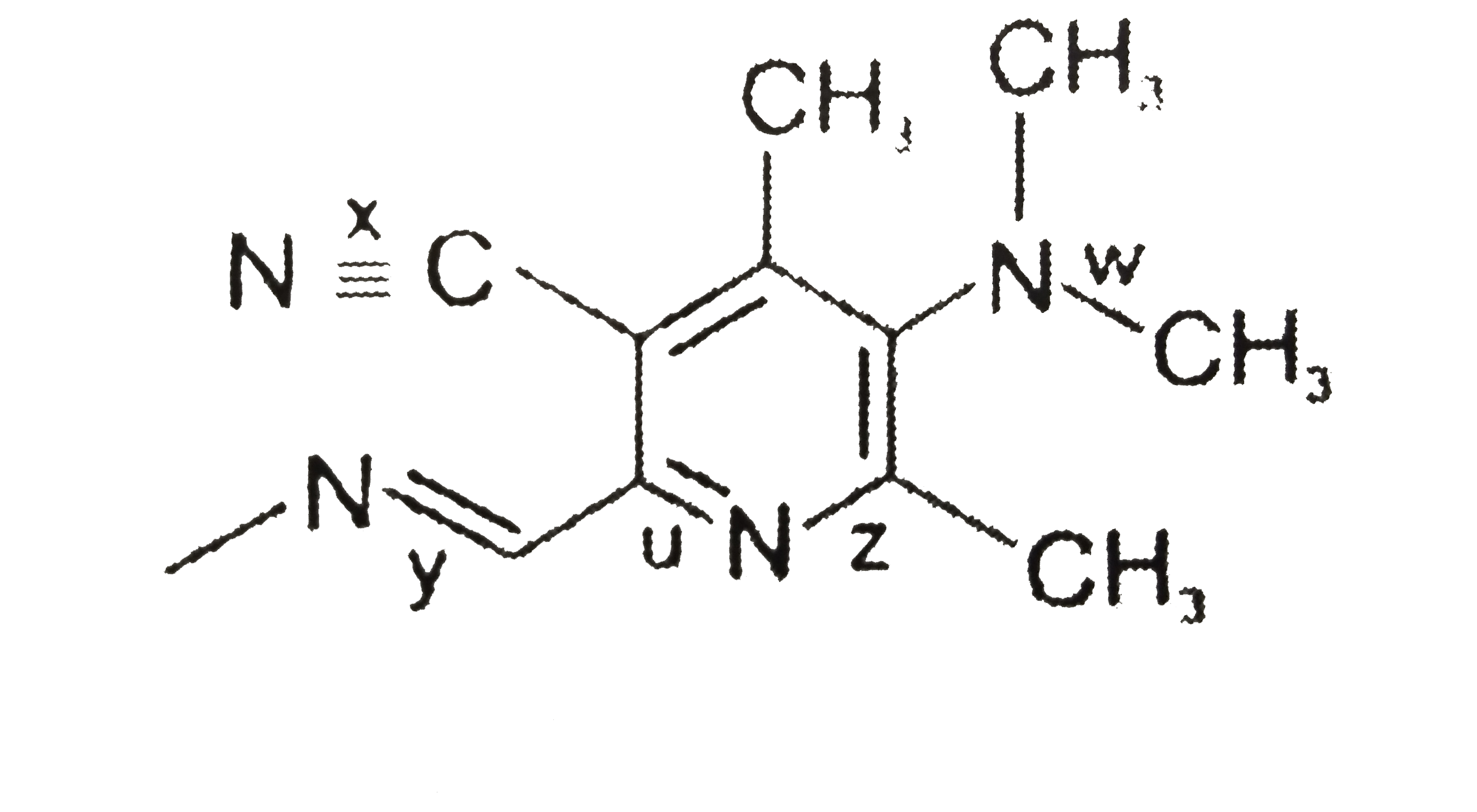The bond angle of C-N-C in N(Et)3
To find the bond angle of C-N-C in triethylamine (N(Et)₃), we can follow these steps:
Step 1: Understand the Structure of Triethylamine
Triethylamine consists of a nitrogen atom bonded to three ethyl groups (C₂H₅). The nitrogen atom has a lone pair of electrons and forms three sigma bonds with the carbon atoms of the ethyl groups.
Step 2: Determine the Steric Number
The steric number is calculated by adding the number of bonded atoms and lone pairs around the nitrogen atom. In triethylamine:
- Nitrogen has 3 bonded ethyl groups (C₂H₅) and 1 lone pair.
- Therefore, the steric number = 3 (bonded groups) + 1 (lone pair) = 4.
Step 3: Identify the Geometry
With a steric number of 4, the molecular geometry around the nitrogen atom is tetrahedral. In a perfect tetrahedral arrangement, the bond angles are 109.5°.
Step 4: Consider Lone Pair and Bond Pair Repulsion
In ammonia (NH₃), the bond angle is slightly less than 109.5° (about 107°) due to the presence of a lone pair, which exerts greater repulsion than bonding pairs. In triethylamine, the ethyl groups are larger than hydrogen atoms, which leads to increased steric repulsion among the ethyl groups.
Step 5: Adjust for Steric Effects
Due to the larger size of the ethyl groups, there is increased steric repulsion compared to ammonia. This steric repulsion causes the bond angle to increase slightly from the tetrahedral angle. The bond angle C-N-C in triethylamine is approximately 111°.
Final Answer
The bond angle of C-N-C in triethylamine (N(Et)₃) is approximately 111°.
---
Triethylamine consists of a nitrogen atom bonded to three ethyl groups (C₂H₅). The nitrogen atom has a lone pair of electrons and forms three sigma bonds with the carbon atoms of the ethyl groups.
The steric number is calculated by adding the number of bonded atoms and lone pairs around the nitrogen atom. In triethylamine:
- Nitrogen has 3 bonded ethyl groups (C₂H₅) and 1 lone pair.
- Therefore, the steric number = 3 (bonded groups) + 1 (lone pair) = 4.
With a steric number of 4, the molecular geometry around the nitrogen atom is tetrahedral. In a perfect tetrahedral arrangement, the bond angles are 109.5°.
In ammonia (NH₃), the bond angle is slightly less than 109.5° (about 107°) due to the presence of a lone pair, which exerts greater repulsion than bonding pairs. In triethylamine, the ethyl groups are larger than hydrogen atoms, which leads to increased steric repulsion among the ethyl groups.
Due to the larger size of the ethyl groups, there is increased steric repulsion compared to ammonia. This steric repulsion causes the bond angle to increase slightly from the tetrahedral angle. The bond angle C-N-C in triethylamine is approximately 111°.
The bond angle of C-N-C in triethylamine (N(Et)₃) is approximately 111°.
Similar Questions
Knowledge Check
- Question 1 - Select One
Statement 1: N2F+3 is planar at each nitrogen atom
Statement 2: In N2H, the bond angle H-N-H is 120∘ and bond the N-N bond length are not equalAStatement 1: is true, statement 2 is true : statement 2 is a correct explanation for statement 2BStatement 1 is true, statement 2 is true , statement 2 is not a correct explanation for statement 2CStatement 1 is true, statement 2 is falseDStatement 1 is false, statement 2 is true - Question 2 - Select One
On comparision with H-C-H bond angle of methane, the C-N-C bond angle of trimethylamine is
AHigherBNo changeCNot comparableDLower - Question 3 - Select One
The longest C−N bond length in the given compound is :
 AxByCzDw
AxByCzDw
How many sigma and pi bonds are present in
(a) CH3−C≡N
(b) CH2=C=OView SolutionIn gaseous triethyl amine "-C-N-C-" bond angle is _____ degree.
View SolutionArrange the following single bonds in order of bond energy giving reasons :
C−C,N−N,O−O,F−FView Solution
In this molecule C−N−C bond angle is 108∘. The hybridization and shape of the above molecule areView SolutionIf C1,C2,C3,…Cn denote the coefficients in the binomial expansion of (1+x)n, then the value of nC1+2.nC2+3.nC3+….+n.nCn is
View Solution

